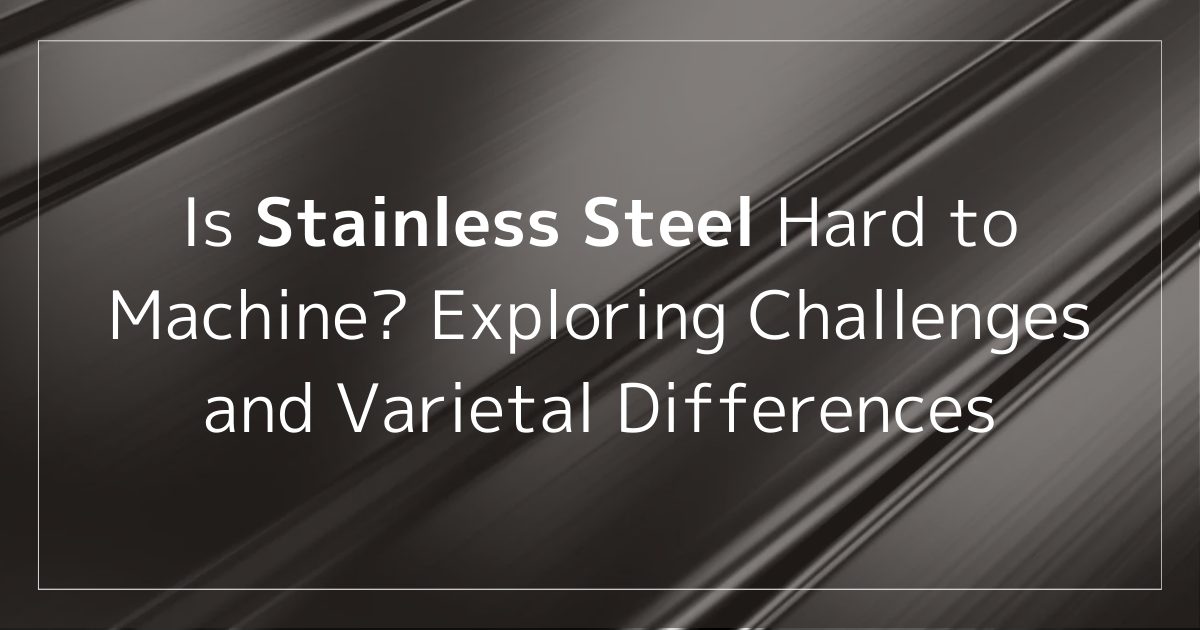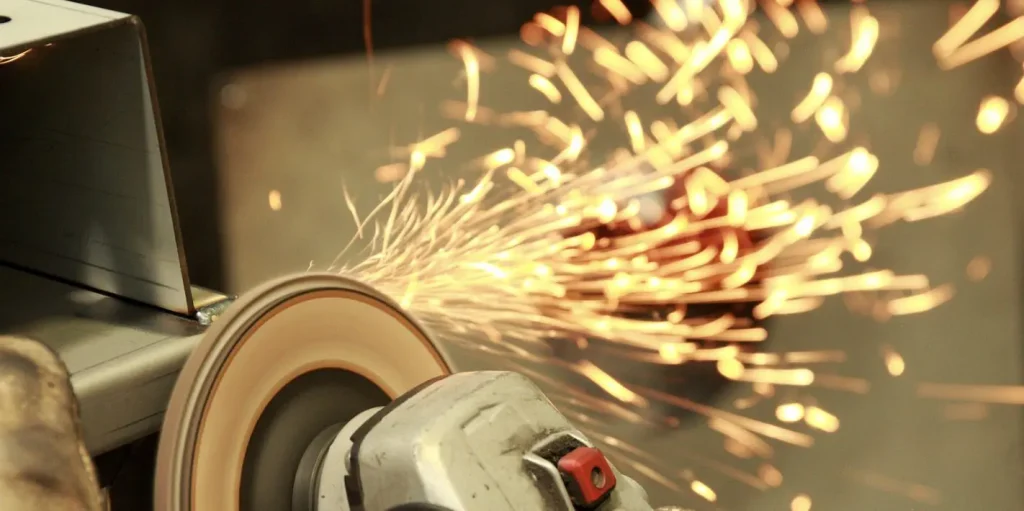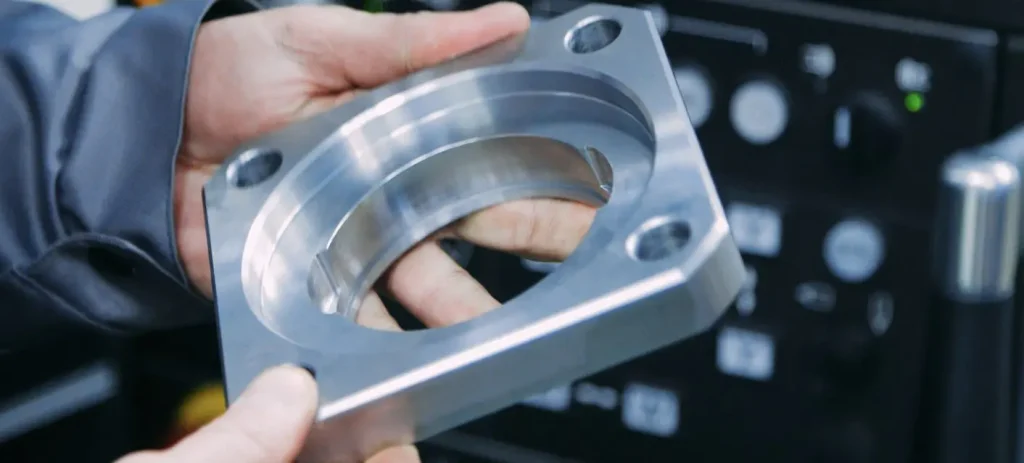Is Stainless Steel Hard to Machine? Exploring Challenges and Varietal Differences

What is Stainless steel?

Stainless steel is a versatile alloy valued for its excellent corrosion resistance, strength, and workability, making it essential in both daily life and industry.
It is used in a wide range of applications, including kitchen utensils, building materials, medical equipment, and automotive parts.
This alloy is produced by adding chromium, nickel, and other elements to iron. When the chromium content exceeds 10.5%, a thin protective chromium oxide film forms on the surface, significantly enhancing rust resistance. Nickel further improves corrosion resistance, workability, and strength, allowing stainless steel to perform well in diverse environments.
Different types of stainless steel are designed for specific purposes. Examples include non-magnetic austenitic grades, magnetic ferritic and martensitic grades, and heat-resistant alloys for high-temperature applications.
Types of Stainless Steel

Stainless steel is classified into several series based on its composition and crystal structure, with the three main types being austenitic, ferritic, and martensitic.
Austenitic Stainless Steel
Austenitic stainless steel is the most commonly used type of stainless steel. It mainly contains chromium and nickel. The nickel helps keep its structure stable at room temperature, which makes the steel non-magnetic. This type of steel is also known for its excellent strength, toughness, and corrosion resistance.
It also features good formability and weldability, making it widely used in kitchen utensils, piping materials, and building materials. Representative grades include 304 (18-8 stainless steel) and 316 (which contains molybdenum for enhanced corrosion resistance).
Ferritic Stainless Steel
Ferritic stainless steel has chromium as its main component and contains very little or no nickel.
Due to its ferritic phase crystal structure (body-centered cubic structure), it is magnetic. While it offers excellent oxidation resistance, it has lower toughness and formability compared to austenitic steel.
It is commonly used in automotive exhaust system parts, kitchen sinks, and building materials, with 430 and 439 being well-known grades.
Martensitic Stainless Steel
Martensitic stainless steel is an alloy of chromium and carbon known for its high hardness and strength.
It can be hardened by heat treatment, making it suitable for applications requiring high wear resistance, such as knives, tools, and industrial bearings.
It is magnetic and, like ferritic steel, has oxidation resistance, but its corrosion resistance is inferior to that of austenitic steel.
Representative grades include 420 and 440C.
Stainless Steel Processing Methods

Here are some common stainless steel processing methods:
Cutting Processing
Stainless steel is challenging to machine because it easily work-hardens and has low thermal conductivity. The heat produced during cutting tends to accumulate on the tool, shortening its lifespan. Effective countermeasures include using plenty of cutting oil and selecting appropriate tool shapes.
Welding
Common welding methods for stainless steel include shielded metal arc welding, submerged arc welding, laser welding, and gas welding.
Challenges include material deformation caused by heat and the requirement for high welding skill levels.
Surface Treatment
Surface treatments for stainless steel include painting, plating, chemical coloring, and etching.
These treatments enhance rust resistance and allow for various color finishes.
Why Stainless Steel is Difficult to Process

Poor Thermal Conductivity
Stainless steel has relatively low thermal conductivity due to its composition.
As a result, heat does not disperse uniformly throughout the material during processing but tends to concentrate at the processing site., potentially causing excessive thermal load on tools, leading to excessive wear and damage. This can lead to excessive thermal stress on tools, increasing wear and damage.
Tendency to Work Harden
Work hardening commonly occurs when processing stainless steel.When force is applied, the crystal structure changes locally, increasing hardness.This makes processes such as cutting and drilling more difficult.
Metal Chips Easily Adhere to Tools
During stainless steel processing, metal chips tend to stick to tools more easily than with other materials.
This is especially noticeable in high-speed cutting operations, where chips adhere to the tool’s cutting edge, reducing sharpness.
Different Processing Methods for Different Types of Stainless Steel

There are multiple types of stainless steel, including austenitic, ferritic, and martensitic, each with its own chemical composition and physical properties.
The differences in these properties require specific approaches in processing methods, necessitating caution.
For example, austenitic steel is non-magnetic and prone to work hardening, so low-speed processing and special tools are recommended for cutting.
On the other hand, ferritic and martensitic steels require different processing techniques from the perspectives of heat resistance and hardness.
Trust Koyo High Precision for Machining Materials
Koyo High Precision delivers high-quality stainless steel machining by combining advanced technology with decades of manufacturing expertise.
We work with a wide range of stainless steel materials, including austenitic, ferritic, and martensitic grades. From precision cutting and machining to welding and surface treatments, we offer comprehensive processing capabilities to meet diverse requirements.
Even stainless steels that are considered difficult to machine can be handled with precision and efficiency at Koyo Denki.
If you are considering stainless steel machining, please feel free to contact us for more information.

